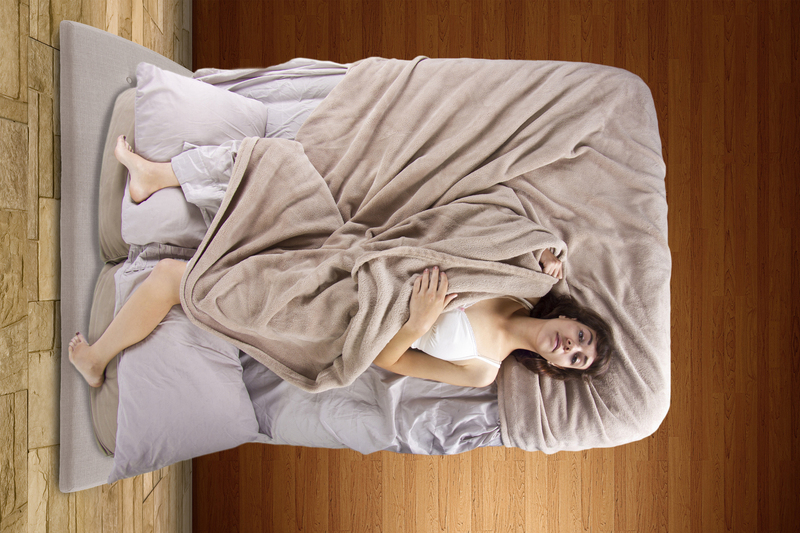Gentle Cleaning Techniques That Protect and Refresh Your Velvet Curtains
Posted on 03/06/2025
Gentle Cleaning Techniques That Protect and Refresh Your Velvet Curtains
Velvet curtains have a timeless elegance and softness that can instantly elevate any room's ambiance. However, their luxurious texture and delicate fibers require special attention when it comes to cleaning and maintenance. Using gentle cleaning techniques is essential to preserve the luster, drape, and lifespan of your velvet window dressings. In this comprehensive guide, we'll explore careful cleaning methods, expert tips, and preventative strategies to help you refresh your velvet curtains at home--without damaging the fabric or its vibrant color.

Why Velvet Curtains Need Special Care
Velvet--whether made from natural fibers like cotton or silk, or modern synthetic blends--boasts a plush pile that's both its allure and its weakness. The pile refers to the short, dense, upright threads that create velvet's characteristic soft surface. These fibers can easily be crushed, stained, or distorted by improper cleaning methods, causing your beautiful curtains to lose their charm. For this reason, choosing gentle and protective cleaning methods is not just recommended but essential.
- Moisture sensitivity: Excess water can flatten or distort velvet's pile, leading to watermarks or stiffness.
- Color bleeding: Harsh cleaning agents or soaking can cause dyes to run or fade.
- Fragile texture: Strong rubbing or scrubbing can crush the nap, resulting in permanent damage.
Routine Maintenance: Keeping Velvet Curtains Clean and Fresh
Regular maintenance can extend the life of your velvet curtains and reduce the need for intensive cleaning. Here's how to keep them looking fresh between deep cleans:
1. Vacuuming Velvet Curtains
Gently vacuuming your velvet curtains is the easiest way to remove dust, pet hair, and airborne particles. Use a hand-held vacuum with a soft brush attachment, or a vacuum cleaner with a special upholstery tool. Always vacuum in the direction of the nap (the natural direction of the fibers) to avoid crushing the pile.
- Set your vacuum to its lowest suction setting.
- Test a small, inconspicuous area first.
- Use slow, smooth strokes from top to bottom.
- Perform this routine at least once a week, or more frequently if your home is dusty or prone to allergens.
2. Shake Out Loose Dust
If the curtains are easily accessible and lightweight, take them down and shake them outdoors to dislodge loose dust and dirt. Always hold the curtains by the header, avoiding excessive wringing or twisting.
3. Spot Cleaning Minor Stains
It's important never to saturate velvet with water or try to "scrub out" stains. Instead, use a blotting technique with a lint-free, slightly damp cloth:
- Blot the area gently--never rub.
- For fresh stains, absorb as much liquid as possible with a clean, dry cloth.
- For old marks, use a solution of cold water and a drop of gentle dish soap.
- Pat the area with the solution, then blot with a dry cloth to remove excess moisture.
- Allow to air dry away from direct heat and sunlight.
Pro tip: Always test cleaning solutions on a hidden part of the curtain before applying them to visible areas.
Deep Cleaning Your Velvet Curtains Safely
Eventually, your velvet curtains may require more thorough cleaning. Before you start, check the care label:
- Dry clean only: Most real velvet, especially silk velvet, is labeled "dry clean only" and should not be washed at home.
- Machine-washable or washable velvet: Some modern synthetic velvets can be gently laundered.
Here are the safest options based on curtain type:
1. Professional Dry Cleaning
For most genuine velvet curtains, professional dry cleaning is the safest method. Dry cleaning avoids moisture and uses solvents that won't crush or matt the nap. Choose a dry cleaner that has experience with velvet fabrics for the best results.
2. Hand Washing Washable Velvet Curtains
If the care label allows hand washing, be exceptionally gentle:
- Fill a large and shallow basin or bathtub with cold water and a small amount of mild detergent.
- Submerge the curtain and move it slowly and gently--never wring, rub, or twist.
- Drain the water and refill with clean cold water to rinse out any soap residue.
- Support the fabric so that its weight doesn't stretch the fibers.
- Lift the curtain from the water and gently press out excess liquid using a towel.
- Lay flat or hang to dry, avoiding direct sunlight, which may cause fading.
3. Steam Cleaning Velvet Curtains
For both cotton and synthetic velvet curtains, steam cleaning can revive their plushness and remove light grime and odors. Here's the safe way to steam:
- Use a hand-held garment steamer--not a steam iron.
- Keep the steamer at least 1 inch away from the fabric to prevent water droplets from forming.
- Move in the direction of the nap, gently sweeping from top to bottom.
- Allow curtains to air dry completely before closing them again.
Steaming also helps release wrinkles after washing or storage, restoring the curtain's elegant drape.
4. Professional In-Home Upholstery Cleaning
If you'd rather not take down your velvet drapes, look for professional cleaners who offer in-home or on-site curtain cleaning. These experts use gentle extraction techniques and specialized products designed for delicate fabrics.
How to Remove Common Stains from Velvet Curtains
Stain removal requires extra care on velvet. Here are solutions for a few common issues:
- Grease/Oil stains: Sprinkle with cornstarch or talcum powder, let sit overnight, then gently brush off and vacuum. Repeat as needed.
- Wine or coffee: Blot immediately, then dab with a mix of cold water and a few drops of white vinegar. Always rinse with plain water and blot dry.
- Pet stains: Blot, then treat with a mild enzyme cleaner that is safe for velvet. Always test an inconspicuous area first.
- Dirt or mud: Allow to dry completely, then gently brush away loose material before vacuuming.
Note: Avoid harsh chemicals like bleach or ammonia, which will damage velvet fibers.
How to Restore the Nap After Cleaning Velvet Curtains
If the curtain's nap (the directional pile) looks flattened after cleaning, it can usually be restored:
- Allow the fabric to dry completely.
- Lightly brush the nap with a velvet brush, a clean clothes brush, or a soft toothbrush.
- For persistent flattening, use a steamer while gently brushing to lift the pile.
This will help bring back your curtains' sumptuous feel and rich appearance.
Important Do's and Don'ts for Preserving Velvet Curtains
- Do: Always check the manufacturer's care labels before cleaning.
- Do: Test cleaning solutions in a hidden area first.
- Do: Hang curtains promptly after any cleaning to avoid creasing.
- Do: Use padded hangers or store rolled--not folded--to prevent creases and pressure marks.
- Don't: Never rub, wring, or twist velvet curtains.
- Don't: Avoid harsh chemicals, heavy vacuums, and rough brushes.
- Don't: Don't expose wet velvet to sunlight or high heat.
How to Prevent Stains and Keep Velvet Curtains Looking Fresh
1. Keep Windows Clean and Screens Intact
Dirt and dust often come from open windows and outdoor breezes. Regularly clean windows, sills, and screens to minimize airborne particles that can soil your velvet drapes.
2. Avoid Direct Sunlight
Sun can fade velvet over time. If possible, use sheer liners behind your velvet curtains, or pull drapes slightly to the side during the sunniest part of the day.
3. Pet and Childproof Your Curtains
Keep pets with claws or playful children away from velvet drapes to avoid snagging or soiling. Tie back curtains when not in use or opt for shorter curtain lengths in busy households.
4. Use Odor Eliminators--Safely
If your curtains absorb household odors, sprinkle baking soda over the fabric, let it sit for 30 minutes, and gently vacuum with a brush attachment. Avoid perfumed sprays, which may leave stains or sticky residues.

Choosing the Right Velvet for Easy Care
When shopping for new velvet curtains, consider modern performance velvets made from polyester or microfiber blends. These curtains often have a similar look and feel to traditional velvet, but are much more resistant to staining, fading, and can sometimes be machine washed on a gentle cycle.
- Cotton velvet: Luxurious but best cared for by professionals.
- Silk velvet: Exquisite, delicate, and almost always dry-clean only.
- Synthetic velvet: Durable and more forgiving for home care.
Conclusion: Maintain the Beauty of Your Velvet Curtains with Gentle Cleaning
Velvet curtains bring sophistication and tactile luxury to your living space, but their delicate pile means ordinary cleaning methods aren't enough. With the right gentle cleaning techniques--from careful vacuuming and spot cleaning to steam cleaning and professional care--you can keep your velvet drapes fresh, vibrant, and soft for years to come. By practicing careful maintenance and employing protective strategies, your velvet curtains will reward you with glamor and comfort that truly lasts.
Did you find these tips helpful? Share this guide to help others preserve their luxurious velvet curtains too!




.jpg)


